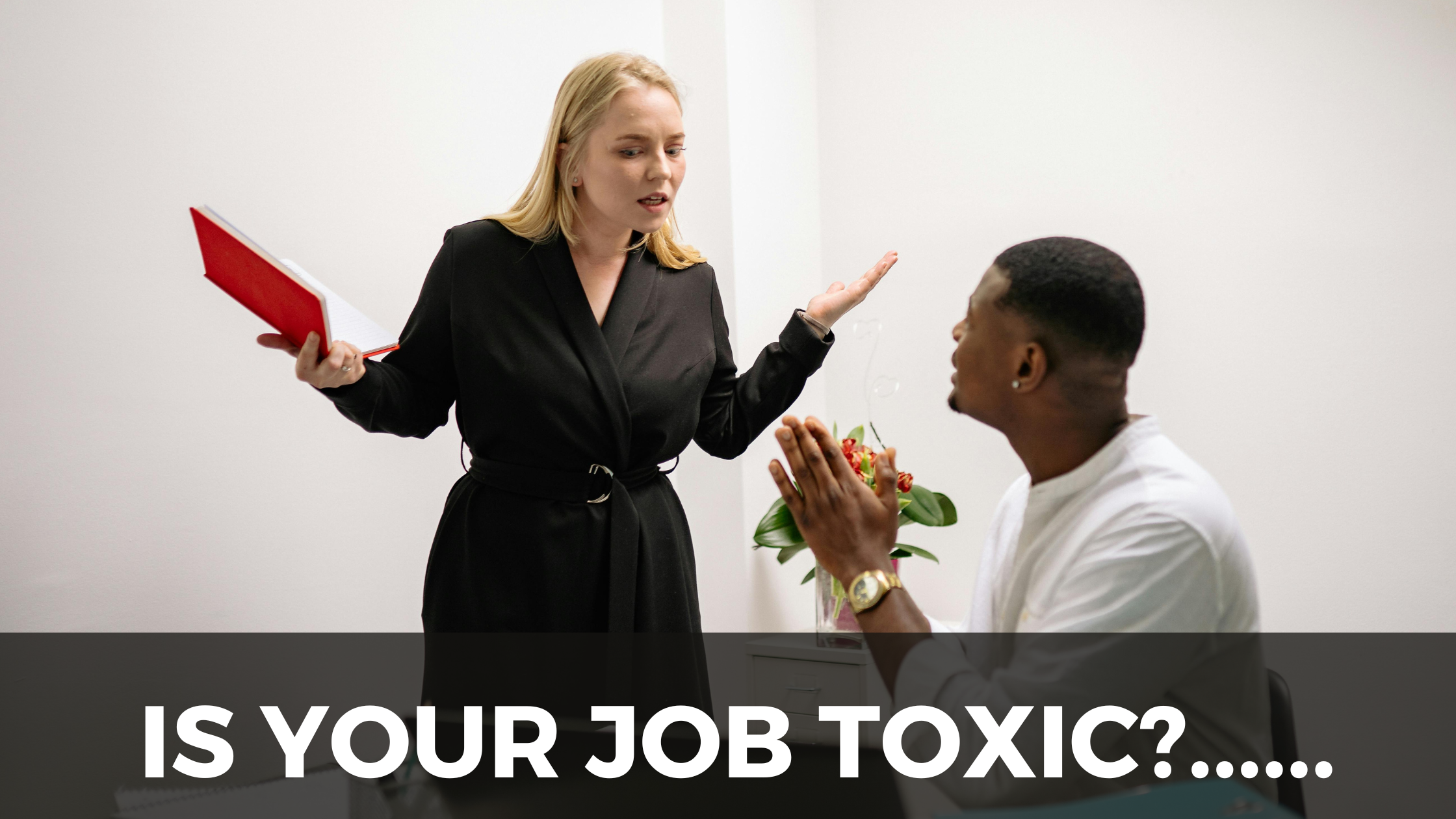“No job is perfect.”
This was what Steve told himself after he was given a task he hated doing, when his coworkers annoyed him, or when a new company policy shook things up. He reminded us to be thankful for what we had. After all, we could have been worse off working somewhere else, right?
But the truth is, if you’re relying on this reminder to help you get through the workday, there’s likely something deeper going on. Have your feelings of cynicism and stress at work increased? Can you not even imagine better days ahead? Do you feel disconnected from the person you used to be?
No matter what you’re feeling, it’s important to be able to recognize whether what you’re experiencing is the result of healthy career growth and change or the result of a toxic work environment. This can be especially challenging if you’re early in your career and have less of a guidepost for what a healthy and fulfilling work experience feels like.
Unlike popular opinion that makes toxicity relative, there are signs to show you a path to a fulfilling career, or whether you’re heading in the wrong direction. Here’s how to figure it out.
1. Evaluate Yourself
Lao Tzu, a Chinese philosopher, said, “Knowing others is intelligence; knowing yourself is true wisdom. Mastering others is strength; mastering yourself is true power.”
Before you can really know what a healthy work environment feels like, you must first understand what you value at work and what you actually want out of your career. Misalignment between yourself and your work can cause varying levels of emotional distress. If you lack clarity around your preferences, it will be harder to gauge whether your negative feelings toward work are the result of internal factors or external ones.
Meanwhile, the stronger your sense of career identity, the easier it will be to attract desirable opportunities and advocates, and the more fulfillment you will experience. Think of your career identity as a combination of your personality, strengths, values, interests, and definition of success. To help guide you in developing your career identity, ask yourself these questions:
1. Which of my strengths are relevant to my current job or what I’d like to do in the near future?
2. What do I need from an employer to bring my best self to work?
3. What activities or topics make me feel completely absorbed?
4. What’s my definition of meaningful work and success?
It’s important to be aware that during social, economic, and life crises, your interests and values will shift and develop. This is an ongoing process that you should take into account.
Once you reflect on your strengths, values, and interests, don’t stop there. Make an effort to understand the way you typically react emotionally to situations. For example, how do you feel after being assigned a task you dislike? How do you react to annoying coworkers or interactions? By having awareness of your emotions, you’ll be able to gauge your personal tolerance. For example, emotions like annoyance, dislike, or worry can be normal and may not be a cause for concern—but feelings of resentment and sadness may tell a different story.
2. Evaluate Your Workplace
Once you’ve done some personal reflection, you should have a little more clarity around any negative feelings you have toward work. For instance, if there is a misalignment between your goals and your job, that may very well be the root cause of your negative feelings. If not, you may need to investigate further. That’s where step two comes in.
Consider the list below. How many of these statements resonate with you?
I have no autonomy to set deadlines, meaningful goals, or processes.
I don’t see any room for internal mobility, and there is a lack of career resources to support me.
The best parts of my job are the pay and benefits. They’re the only things keeping me from leaving even though I’ve witnessed some unethical behavior.
I’m afraid to advocate for what I want and need because I often get brushed aside or ignored.
I’ve been having headaches, trouble sleeping, and challenges with focus.
My confidence and self-worth are dwindling.
People in my close circle have commented on a change in our relationship.
I’ve been using unhealthy coping outlets to deal with stress.
These are all signs that you may be working in an unhealthy environment. Toxic workplaces not only impact our emotions and well being at work—they can interrupt every part of our lives. If many of the statements above reflect how you feel frequently, take note.
Alternatively, here are some statements that signal your work environment is healthy and you’re on the right path:
Time flies by at work, and not in an unproductive, “I didn’t get anything done” way.
I’m not just recognized by my boss and colleagues; I feel appreciated, too.
I am committed and willing to go the extra mile, and I can often do so without sacrificing my health and personal relationships.
I experience belonging, achievement, purpose, creativity, and growth through learning.
I know who to turn to when I need help with my work or when I have a problem that needs to be addressed.
I have positive relationships with most of the people I work with, including my boss and peers.
If the above statements resonate with you, you’re likely on a positive path forward at work and in your career. This is a good sign—but remember to check in with yourself frequently to monitor for any changes.
3. Evaluate Your Options
If you do feel that you’re in a toxic work environment, know that you have options. First, you can address your concerns with your manager. Some people may not feel comfortable approaching their manager. In this case, try finding an ally or a trusted peer you can confide in. Look for people who share your values and who will back you up when you raise cultural concerns that are unique to your organization.
Finally, if your work environment is causing you emotional distress even when you’re not at work, try talking to a professional with an outsider’s perspective. The grass is not always greener on the other side but if none of the above works, leave.







